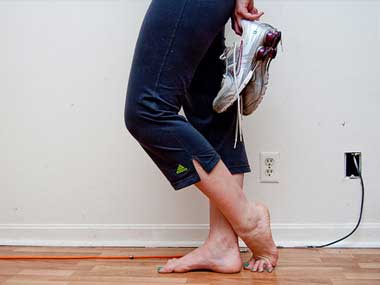There have been talks for many, many years about the correct way to run. Many athletes have stated that landing on the heels first promotes more speed and is an easier way of running, whereas podiatrists, physiotherapists and barefoot running enthusiasts claim you should be landing on the balls of your feet.
Let's look at both sides of the argument…
A good heel-to-toe connection when running certainly feels a lot more organic on a treadmill than it does when running on the road or on a path. However, running on a treadmill is something that has only really come around in the last few decades to cater for the countries with colder climates that don't quite readily accommodate winter running conditions.
If we skip back a couple of thousand years when specially engineered sports shoes simply didn't exist and humans got around barefoot and with very minimal support to their feet, they ran on the roughest of conditions and always landed on the balls of their feet. Try it yourself. Remove your shoes and try to run a few paces - your automatic reaction is to run on the balls of your feet, because landing on your heel is damn painful and extremely easy to cause injury.
So why do most runners run on their heels? Well, modern day running shoes cater exactly for that method of running and when you put them on it's extremely easy to run in that way. When we walk, we land on our heels. It feels awkward to walk and land on your toes and is far more strenuous than gently landing on the back of the foot. Also, there is very very little impact when you walk, so barefoot or not, it doesn't matter, your body will happily accommodate the impact to the heel.
The leading sports footwear providers received a lost-in-translation message by designing shoes specifically for landing on the heel. They should have observed humans running barefoot and accommodated footwear for the natural way to run. This would have prevented such a misconception of running. Brands are now making special "toed" shoes (they look like gloves but for your feet!) which promote better balance, foot placement and pace. Opt for these when buying running shoes.
It's actually very easy to run barefoot and run in the correct way. There is nothing interfering with the way that your body is designed to run, and you are not susceptible to as many injuries than when running in the widely accepted incorrect way. Now, of course running barefoot is not of the greatest convenience so you can buy shoes that cater specifically for landing on the forefoot. You can even run in normal running shoes and land in the correct way, but it is slightly harder and the natural tendency is to go back to the expected way.
Try it. Try landing on your forefoot for your next few runs and allow your body to follow its natural design.

